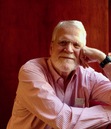Mark Scott Smith's Blog: Enemy in the Mirror, page 85
November 27, 2017
ENIAC
During WWII, the U.S. Ballistics Research Laboratory was handling the complex calculations of range tables that were needed for new artillery. In 1942, physicist John Mauchly proposed an all-electronic calculating machine in a memorandum entitled “The Use of High Speed Vacuum Tube Devices for Calculating.”
ENIAC (Electronic Numerical Integrator And Computer), developed from 1943 -1945, became the first large-scale computer to run at electronic speed without being slowed by any mechanical parts. Completed in 1946, ENIAC had 18,000 vacuum tubes, 70,000 resistors, 6,000 switches, and 10,000 capacitors. Able to perform 5000 additions per second, ENIAC was much faster than any existing device of the time.
Thinking beyond its military applications, Mauchly realized the ENIAC technology could be applied to the private sector. In 1946, Mauchly and his chief engineer J. Presper Eckert designed the first general-purpose computer for commercial use: UNIVAC.

The post ENIAC appeared first on Enemy in the Mirror.
November 23, 2017
Animal Farm
George Orwell, the author of Animal Farm, published in 1945, described his book as an allegorical account of events leading up to the Russian Revolution of 1917 and the subsequent Stalinist era of the Soviet Union.
George Orwell was the nom de plum of Eric Blair, a British political novelist and essayist. As a young socialist, he fought in the Spanish Civil War. But in the 1930s, as he became aware of the cruel realities of Soviet dictatorship under Joseph Stalin, Orwell became critical of both capitalism and communism.

The 1945 book Animal Farm: A Fairy Story was conceived as an allegory that used English farm animal characters to describe the evolution of Soviet communism. Certain animals were meant to portray important Russian Communist Party leaders (e.g., the pigs Napoleon and Snowball represented Joseph Stalin and Leon Trotsky, respectively).
The post Animal Farm appeared first on Enemy in the Mirror.
November 20, 2017
The Long Telegram
In 1946, the American Chargé d’Affaires in Moscow George F. Kennan proposed the concept of “containment” in his famous 8,000-word “long telegram” to the U.S. State Department. These suggestions became the foundation of U.S. Cold War policy in the 1940s.
in 1947, under the pseudonym “Mr. X,” Kennan further outlined the concept in an article entitled The Sources of Soviet Conduct published in the highly-respected political journal Foreign Affairs.
The Russians can’t be trusted and they probably won’t be changed. The main element of U.S. policy toward the Soviet Union, Kennan declared, must be patient but firm and vigilant containment of Russian expansive tendencies.
The post The Long Telegram appeared first on Enemy in the Mirror.
November 16, 2017
COLD WAR BEGINS

After the 1917 October Revolution in Russia, most Americans viewed Communism as a threat to the Western democracies. Communist rhetoric envisioning the overthrow of capitalism was common in Depression-era America. Before WWII, both American and Soviet propaganda.viewed the other side’s system of government as evil.
However, joining forces with the USSR to defeat the Axis powers in WWII caused a change in American propaganda that portrayed a heroic image of communists fighting Fascism as depicted in the Hollywood film The North Star.

When the war ended in 1945, American warmth toward the Soviet Union soon faded and Communists throughout the world were again seen as an evil force.
The post COLD WAR BEGINS appeared first on Enemy in the Mirror.
November 13, 2017
Understanding Korea
Ancient Korea
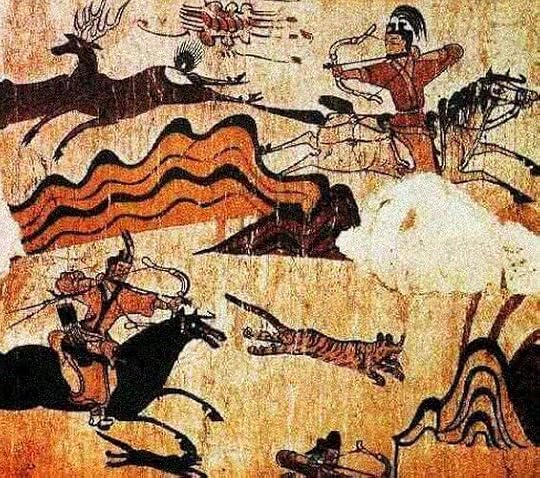
https://pm1.narvii.com/6375/52f6b2750...
Gojoseon, Korea’s legendary first kingdom, was founded in 2333 B.C.E. After its collapse, several small kingdoms coalesced into the Three Kingdoms Period (Goguryeo, Baekje and Silla) around the year zero C.E. Gradually assuming power, Silla consolidated rule over the Korean peninsula in 668 C.E. In 935 C.E. Silla fell to Goryeo. In 1392 C.E. Joseon conquered Goryeo and ruled the peninsula until the Japanese annexation of 1910. – Source: New World Encyclopedia
Japanese Colonial Rule in Korea 1910-1945
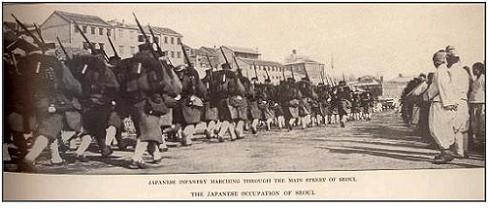
https://upload.wikimedia.org/wikipedi...
Initially, Imperial Japanese colonial rule of Korea by military force was very harsh and dissent was ruthlessly crushed. After a nationwide protest in 1919, some freedom of expression was allowed. In 1939, >80% of Koreans were pressured to assume Japanese names.
With the onset of the Second Sino-Japanese War in 1937, and throughout the WWII War in the Pacific, Koreans were forced to work in Japanese factories and were conscripted into the Imperial Japanese Army. Also, thousands of young Korean women were forced into sexual slavery as “Comfort Women” for Japanese soldiers. – Source: Asia for Educators
Post WWII Korea
In 1945, with agreement that Korea should be unified and independent, the USSR and USA occupied Korea, north and south of a boundary line along the 38th parallel.
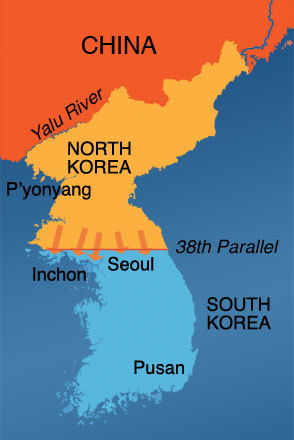
https://upload.wikimedia.org/wikipedi...
U.S. Troops in Korea
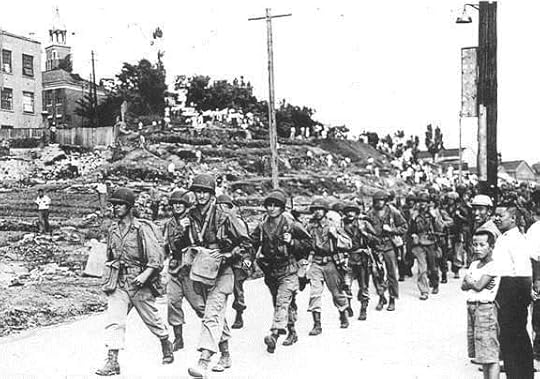
http://voiceofdetroit.net/wp-content/...
Unfortunately, with onset of the Cold War, negotiations regarding a unified state of Korea failed. In 1948, U.N. elections, held only in South Korea, resulted in the establishment of the Republic of Korea. Soon after, with the the support of the USSR, the Democratic People’s Republic of Korea (DPRK) was formed in the north.
Here is an alternate history promulgated by the Democratic People’s Republic of Korea.
The post Understanding Korea appeared first on Enemy in the Mirror.
November 9, 2017
Vietnam After WWII
French Indochina was formed in the late 19th century by combining three Vietnamese regions (Tonkin, Annam and Cochinchina) with Cambodia, Laos and Guangzhouwan. With the fall of France in 1940, the control of the colony shifted to the Vichy French who allowed military occupation by Imperial Japan.

With a weakened French position in Indochina, Thailand waged the Franco-Thai War in 1940-41 to reclaim previously-lost territories. A peace treaty brokered by Japan granted disputed border lands in Cambodia and Laos to Thailand.
From March-August 1945 Japan assumed complete control of French Indochina. At the conclusion of WWII, the French tried to reassert control over the region but were opposed by the Viet Minh, a coalition of nationalists and Communists led by Nguyen Sinh Cung (later named Ho Chi Minh). The Viet Minh launched a lengthy guerrilla war from 1946-1954 known as the First Indochina War.
The post Vietnam After WWII appeared first on Enemy in the Mirror.
Vietnam 1945
French Indochina was formed in the late 19th century by combining three Vietnamese regions (Tonkin, Annam and Cochinchina) with Cambodia, Laos and Guangzhouwan. With the fall of France in 1940, the control of the colony shifted to the Vichy French who allowed military occupation by Imperial Japan.

With a weakened French position in Indochina, Thailand waged the Franco-Thai War in 1940-41 to reclaim previously-lost territories. A peace treaty brokered by Japan granted disputed border lands in Cambodia and Laos to Thailand.
From March-August 1945 Japan assumed complete control of French Indochina. At the conclusion of WWII, the French tried to reassert control over the region but were opposed by the Viet Minh, a coalition of nationalists and Communists led by Nguyen Sinh Cung (later named Ho Chi Minh). The Viet Minh launched a lengthy guerrilla war from 1946-1954 known as the First Indochina War.
The post Vietnam 1945 appeared first on Enemy in the Mirror.
November 6, 2017
You and the Atomic Bomb
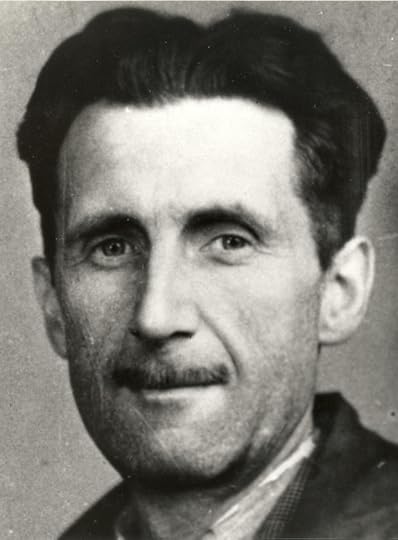
Image: Wikimedia Commons
Just months after the atomic bombing of Hiroshima and Nagasaki, George Orwell published an essay entitled You and the Atomic Bomb in the London Tribune. The first one to use the term “cold war,” Orwell outlines in the prophetic excerpt below a rationale that would become a tenet of the mutual deterrence strategy employed by the the USA and USSR in the years to come.
… For forty or fifty years past, Mr. H. G. Wells and others have been warning us that man is in danger of destroying himself with his own weapons, leaving the ants or some other gregarious species to take over. Anyone who has seen the ruined cities of Germany will find this notion at least thinkable. Nevertheless, looking at the world as a whole, the drift for many decades has been not towards anarchy but towards the reimposition of slavery. We may be heading not for general breakdown but for an epoch as horribly stable as the slave empires of antiquity. James Burnham‘s theory has been much discussed, but few people have yet considered its ideological implications — that is, the kind of world-view, the kind of beliefs, and the social structure that would probably prevail in a state which was at once unconquerable and in a permanent state of ‘cold war’ with its neighbors.
Had the atomic bomb turned out to be something as cheap and easily manufactured as a bicycle or an alarm clock, it might well have plunged us back into barbarism, but it might, on the other hand, have meant the end of national sovereignty and of the highly-centralised police state. If, as seems to be the case, it is a rare and costly object as difficult to produce as a battleship, it is likelier to put an end to large-scale wars at the cost of prolonging indefinitely a ‘peace that is no peace’.
The post You and the Atomic Bomb appeared first on Enemy in the Mirror.
1945 ~ You and the Atomic Bomb

Image: Wikimedia Commons
Just months after the atomic bombing of Hiroshima and Nagasaki, George Orwell published an essay entitled You and the Atomic Bomb in the London Tribune. The first one to use the term “cold war,” Orwell outlines in the prophetic excerpt below a rationale that would become a tenet of the mutual deterrence strategy employed by the the USA and USSR in the years to come.
… For forty or fifty years past, Mr. H. G. Wells and others have been warning us that man is in danger of destroying himself with his own weapons, leaving the ants or some other gregarious species to take over. Anyone who has seen the ruined cities of Germany will find this notion at least thinkable. Nevertheless, looking at the world as a whole, the drift for many decades has been not towards anarchy but towards the reimposition of slavery. We may be heading not for general breakdown but for an epoch as horribly stable as the slave empires of antiquity. James Burnham‘s theory has been much discussed, but few people have yet considered its ideological implications — that is, the kind of world-view, the kind of beliefs, and the social structure that would probably prevail in a state which was at once unconquerable and in a permanent state of ‘cold war’ with its neighbors.
Had the atomic bomb turned out to be something as cheap and easily manufactured as a bicycle or an alarm clock, it might well have plunged us back into barbarism, but it might, on the other hand, have meant the end of national sovereignty and of the highly-centralised police state. If, as seems to be the case, it is a rare and costly object as difficult to produce as a battleship, it is likelier to put an end to large-scale wars at the cost of prolonging indefinitely a ‘peace that is no peace’.
The post 1945 ~ You and the Atomic Bomb appeared first on Enemy in the Mirror.
November 2, 2017
COLD WAR DAYS

Dear valued reader –
With posts about the Nuremberg and Tokyo Trials, we draw our Enemy in the Mirror website coverage of WWII to a close and embark on what would become known as the Cold War.
I began this website as I dug deeply into the literature and travelled to Japan, researching my first history-inspired novel Enemy in the Mirror: Love and Fury in the Pacific War.
 Hakodate, Japan
Hakodate, Japan
Researching the war against the U-Boats off the East Coast USA, Gulf of Mexico and Caribbean for my soon-to-be-published second novel The Osprey and the Seawolf ~ Moonlight Warriors 1942, I visited Germany, Cuba, Yucatán and Florida.
 Lübeck Germany
Lübeck Germany
 Havana Cuba
Havana Cuba
 Mérida, Yucatán
Mérida, Yucatán
 Jacksonville, Florida
Jacksonville, Florida
As I learned fascinating cultural and historical information about America and her enemies during the years leading up and into WWII, I began to post it here.
Born in 1942, I find myself drawn to write about America’s wars that have occurred in my lifetime. As I prepare to publish my second WWII novel The Osprey and the Seawolf ~ Moonlight Warriors 1942, I am beginning to research the years 1945-50 that lead up to the Korean War – the topic of my third novel. As always, I will share interesting cultural and historical information I encounter on this website.
I would like to encourage readers to share comments and links to additional information and analysis pertinent to the topics discussed.

In an attempt to know you better and promote dialogue, I pose this question:
What topics interest you most about this website?
You can enter other topics and suggestions or copy & paste topics from this list into the comments box below.
historical events
world politics
military & political leaders
battles
military equipment & tactics
emotion
home front culture – customs, religion, arts, literature, music
Home Front – USA
Home Front – Enemy
The post COLD WAR DAYS appeared first on Enemy in the Mirror.
Enemy in the Mirror
I began by posting events around the turn This website www.enemyinmirror.com explores the consciousness, diplomacy, emotion, prejudice and psychology of 20th Century America and her enemies in wartime.
I began by posting events around the turn of the 20th century as I was researching my first novel about the Pacific War. I continued through WWII for my second novel about the Battle of the Atlantic. Now I am beginning to look at the Cold War as I gather information for my next novel about the Korean War. ...more
- Mark Scott Smith's profile
- 7 followers


